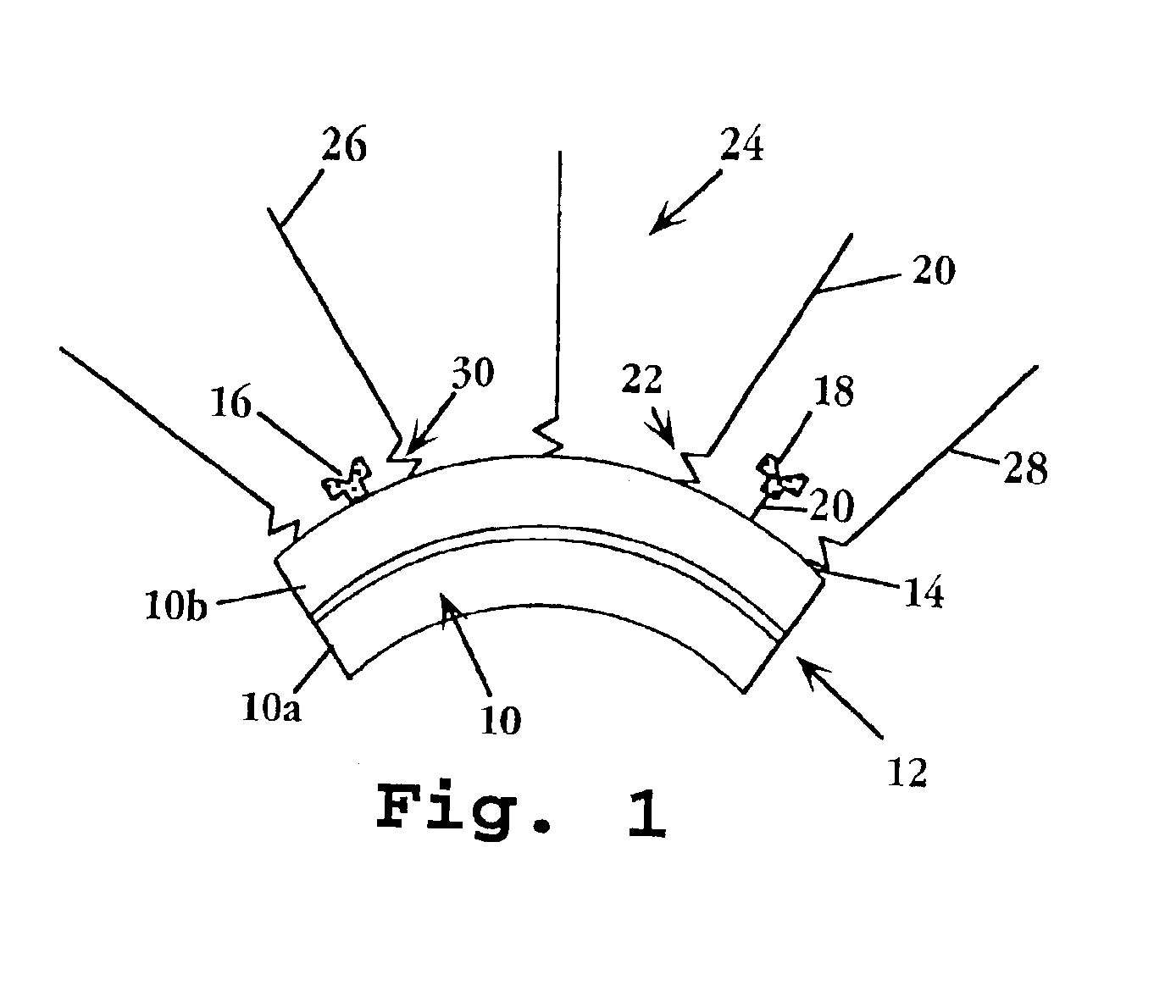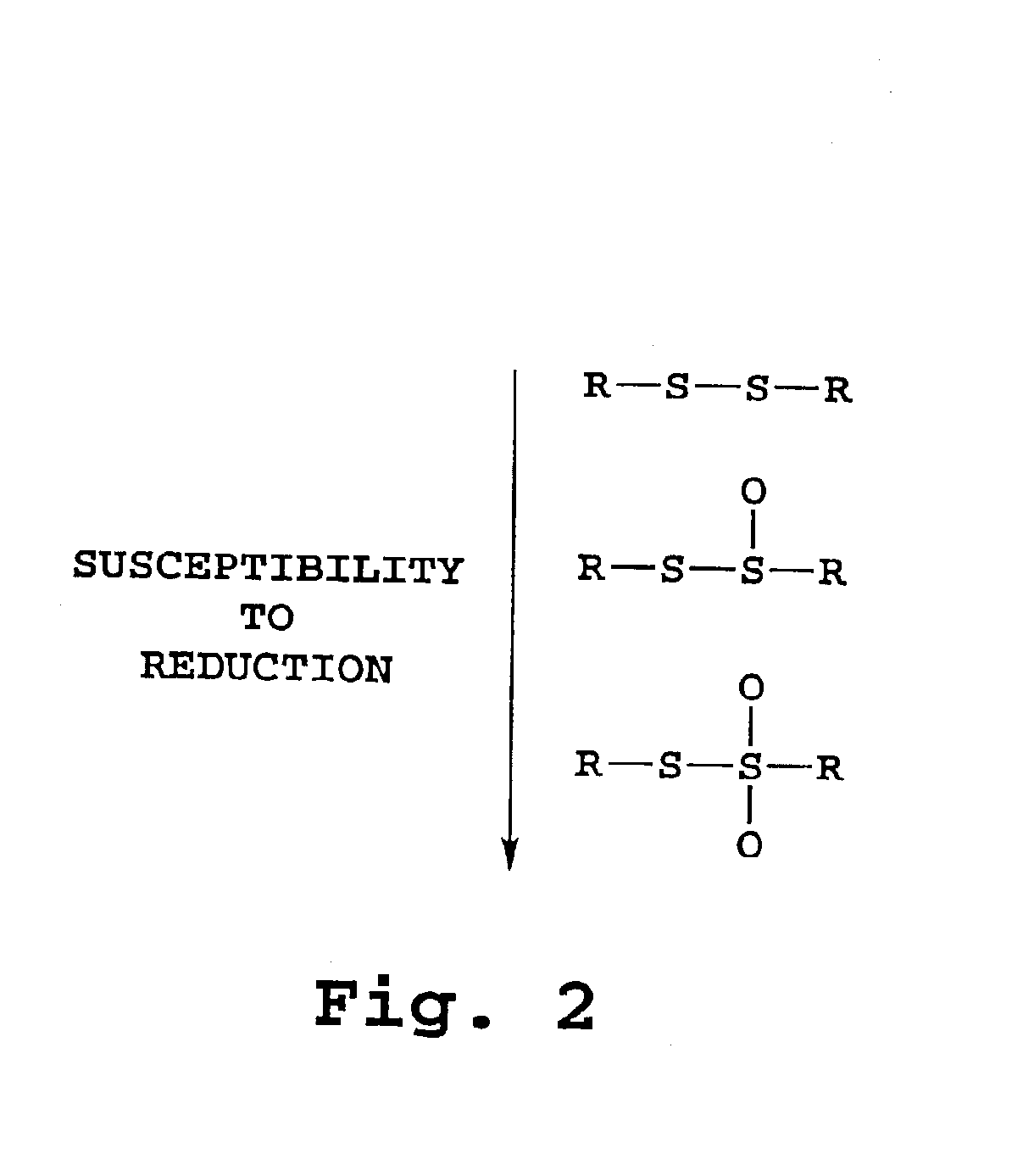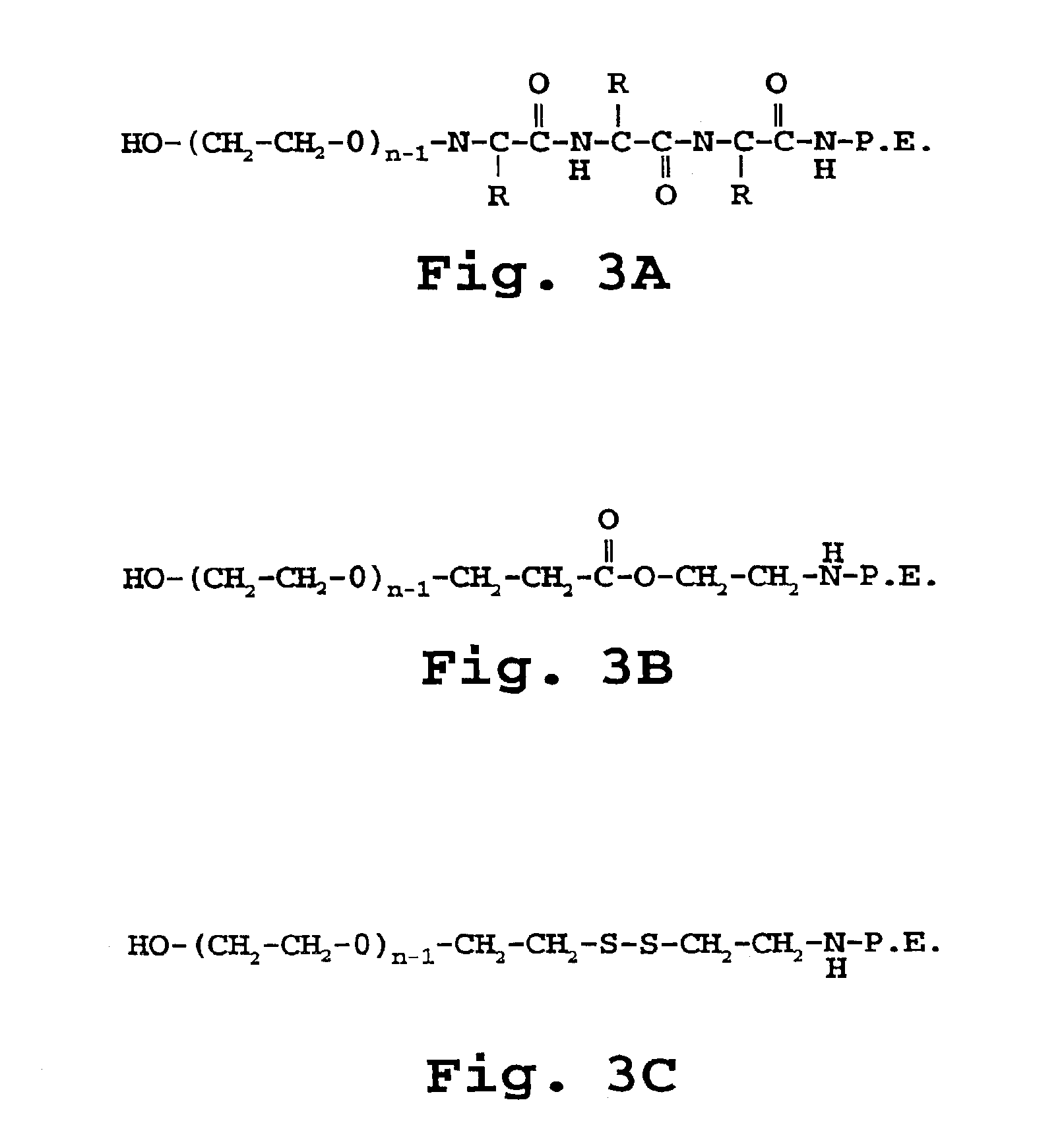Therapeutic liposome composition and method
- Summary
- Abstract
- Description
- Claims
- Application Information
AI Technical Summary
Benefits of technology
Problems solved by technology
Method used
Image
Examples
example 1
Preparation of mPEG-DTP-DSPE
[0175]A. Preparation of N-succinimidyl-(2-(ωmethoxy-poly-(oxyethylene)-α-aminocarbonyl)ethyl-diothiopropionoate Intermediate, (mPEG-DTP-OSu)
[0176]This synthetic scheme is illustrated in FIG. 3. N-succinimidyl-(2-(ω-methoxypoly(oxyethylene)-α-aminocarbonyl)ethyl-diothiopropionoate (compound III), is prepared according to the method of Kirpotin, et al., 1996.
[0177]A solution of dithiobis(succinimidyl propionate) (873 mg, 2 mmol) (DTSP, compound II), prepared from dithiodipropionic acid (Aldrich, Milwaukee, Wis.), is dissolved in dimethylformamide (10 ml) and treated with methoxypoly(ethylene glycol)amine (2 g, 1 mmol), mPEG-NH2 (compound I), prepared according to the method of Zalipsky (1983), and triethylamine (140 ml). The resulting N-succinimidyl ester polymer intermediate, N-succinimidyl-(2-(ω-methoxypoly(oxyethylene)-α-aminocarbonyl)ethyl-diothiopropionate (mPEG-DTP-OSu, compound III) is then purified by recrystallization twice from isopropanol, follow...
example 2
Liposome Preparation
[0180]Liposomes are prepared according to standard procedures by dissolving in chloroform the following lipids: 85 mole percent distearyl phosphatidylglycerol (DSPG), 10 mole percent of the disulfide-linked PEG-DSPE conjugate prepared as described in Example 1, 1 mole percent of an affinity moiety-DSPE conjugate, and 4 mole percent cholesterol. The lipids are dried as a thin film by rotation under reduced pressure. The lipid film is hydrated by addition of an aqueous phase to form liposomes which are sized by sonication or by sequential extrusion through Nucleopore polycarbonate membranes with pore sizes of 0.4 μm, 0.2 μm, 0.1 μm and 0.5 μm to obtain liposomes of 100-150 nm in size.
example 3
In Vivo Administration of Releasable PEG Liposomes
[0181]A. Liposome Formulations
[0182]Cationic liposomes having a surface coating of PEG and complexed to a luciferase-bearing plasmid were prepared as follows.
[0183]B. Preparation of Cationic Liposome / Plasmid Complex
[0184]Cationic liposomes composed of the lipids dimethyldioctadecylammonium and cholesterol (DDAB:CHOL) were prepared according to standard procedures by dissolving 10 μmole DDAB and 10 μmole CHOL in an organic solvent containing primarily CHCl3. The lipid solution was dried as a thin film by rotation under reduced pressure. The lipid film was hydrated by the addition of the desired aqueous phase, e.g., water, saline or buffer, to form liposomes (at a total lipid concentration of 20 μmole / ml) which were sized by sonication or by sequential extrusion through Nucleopore polycarbonate membranes with pore sizes of 0.4 μm, 0.2 μm, 0.1 μm and 0.05 μm to obtain liposomes of 100-150 nm in size.
[0185]A luciferase plasmid was used a...
PUM
| Property | Measurement | Unit |
|---|---|---|
| Mass | aaaaa | aaaaa |
| Size | aaaaa | aaaaa |
| Hydrophilicity | aaaaa | aaaaa |
Abstract
Description
Claims
Application Information
 Login to View More
Login to View More - R&D
- Intellectual Property
- Life Sciences
- Materials
- Tech Scout
- Unparalleled Data Quality
- Higher Quality Content
- 60% Fewer Hallucinations
Browse by: Latest US Patents, China's latest patents, Technical Efficacy Thesaurus, Application Domain, Technology Topic, Popular Technical Reports.
© 2025 PatSnap. All rights reserved.Legal|Privacy policy|Modern Slavery Act Transparency Statement|Sitemap|About US| Contact US: help@patsnap.com



